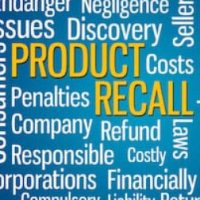Does The Product Recall Process Keep You Safe?

Who among us hasn’t owned a product—anything from a child’s toy to a vehicle—that has been recalled due to some kind of safety issue? It makes you wonder—is there anything in your home that has been recalled unbeknownst to you? Or perhaps there is a product that has had safety issues, but that hasn’t yet been recalled. It wouldn’t be too surprising, because there are so many cracks in the recall system that consumers are oftentimes left blind to the dangers lurking in their homes.
What Precedes a Recall?
Safety concerns prompt recalls with surprising regularity across the country. The two central reasons for these recalls relate to either design or manufacturing issues. It seems that the pressure to innovate juxtaposed with the demand to cut costs puts companies in the position of cutting corners in the process of designing or manufacturing in order to meet quotas and goals. They may or may not suspect potential safety risks, all the while betting that the product will roll out to consumers without glitches. It’s only after there are problems that alarm bells start to go off.
Consumer Product Safety Commission
The CPSC—tasked with protecting consumers—is overwhelmed with oversight of over 15,000 different products. But that doesn’t include inspecting products; it’s just a matter of responding to consumer complaints or company self-reporting. That means products generally do not face recall demands until after there have already been serious impacts on the public. Even when the CPSC believes a product has serious problems, they are not allowed to inform the public until after manufacturers have the chance to defend themselves. So dangerous products remain in homes as the process for recall drags on.
Foot Dragging When Problems Occur
All too often, companies take their time recalling dangerous products, fearful of the hit to the bottom line. One horrendous example involves Peloton, who failed to notify regulators that children, pets, and objects were being dragged into the treadmill belts, resulting in serious injuries and death. When regulators finally got wind of the issues, Peloton continued to resist the Consumer Product Safety Commission’s (CPSC) pressure to recall the treadmills until the number of serious incidents became too numerous to ignore any longer.
Interesting Facts About Recalls
It may be of interest to know that not every company responds to recall demands in the same way:
- Male CEOs are more likely to resist recalling their products than their female counterparts;
- CEOs who own large amounts of stock in their companies are more reluctant to approve recalls than those who do not;
- CEOs who’ve been leading a company for a number of years are less likely to approve recalls than those who are new to the job.
When Products Cause Harm
The bottom line is that red tape leaves the public at risk. An overworked agency that doesn’t always have the muscle to pull products off the shelves is no match for the number of products that have the potential to cause harm. If you or a loved one has been harmed by a product that had manufacturing or design issues, you may be entitled to damages to address your medical bills and more. Contact the aggressive, knowledgeable Baltimore personal injury attorneys at the Law Office of Hasson D. Barnes for a confidential consultation today.
Source:
vox.com/money/2023/3/9/23620714/product-recalls-cpsc-peloton-fisher-price-danger-consumers
